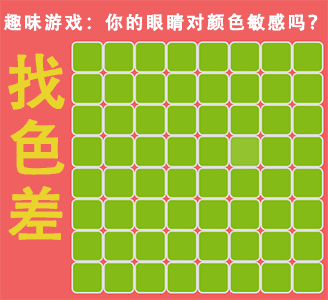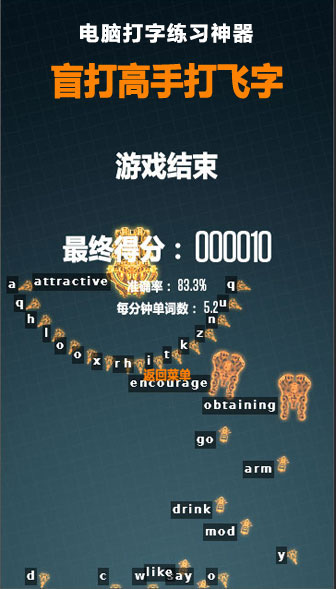300行代码实现手写汉字识别
本文主要介绍如何通过机器学习来实现手写汉字识别,核心算法采用C++编写,不足300行,代码开源在Github-HandWriteRecognition。
主要思路:
- 提取每个汉字的笔画特征,保存成一个字库;
- 通过手写板或者触摸板获取用户的手写轨迹坐标;
- 坐标预处理;
- 通过 KNN 算法,与字库中的每个汉字进行比较;
- 根据比较距离的大小进行排序,输出结果。
字库
这里的字库,是基于Tomoe Handwriting Dictionary字库进行特殊处理后,生成的model文件。
Tomoe字库收集了汉字的每一笔的起始和转折点,可以认为是特征点。例如
下面是“丁”字的表示,分为两笔,第一笔只有起点和终点,第二笔还包含了转择点:
<character>
<utf8>丁</utf8>
<strokes>
<stroke>
<point x="93" y="198"/>
<point x="913" y="205"/>
</stroke>
<stroke>
<point x="495" y="203"/>
<point x="470" y="847"/>
<point x="405" y="784"/>
</stroke>
</strokes>
</character>但是Tomoe字库的缺点很明显,首先,其坐标都是基于其本身的画板大小的(1000*1000),而我们在进行手写识别时,无法预先知道触摸屏或者手写板的区域大小,所以,必须对数据归一到同一大小的面板中,其次,其用的是xml格式,导致冗余字段非常多,字库很大(8.8M),非常占空间,而且加载时很慢。
针对,数据归一处理的问题,后面的算法环节会提及处理方法。字库文件过大的问题,这里采用自定义的格式,以“丁”字为例:
丁:[[(93,198),(913,205)][(495,203)(470,847)(405,784)]]这样,将原来8.8M的大小压缩到仅有1.5M,后面根据算法需要会进一步压缩。
特征点
由于用户手写的坐标,是连续的,而且非常多,我们必须从中提取特征点,用于与词库中的特征点做比较。特征点提取,这里,我们用的是点到直线的距离来判断,以“丁”字为例,其第二笔的特征点,首先是起始和结束点,其次是转择点,明显可以看出转折点离起始和结束点连成的直线,距离最远。因此,只要我们设置合适的阈值,就可以通过点到直线的距离,来找出转折点,加上起始和结束点,作为特征点。
因为,一笔笔画可能有多个转折点,所以,我们通过递归来完成:
void turnPoints(Stroke *stroke, std::vector<Point> *points, int pointIndex1, int pointIndex2){
if(pointIndex1 < 0 || pointIndex2 <= 0 || pointIndex1 >= pointIndex2 - 1)
return;
const float a = stroke->points[pointIndex2].x - stroke->points[pointIndex1].x;
const float b = stroke->points[pointIndex2].y - stroke->points[pointIndex1].y;
const float c = stroke->points[pointIndex1].x * stroke->points[pointIndex2].y - stroke->points[pointIndex2].x * stroke->points[pointIndex1].y;
float max = 3000;
int maxDistPointIndex = -1;
for(int i = pointIndex1 + 1; i < pointIndex2; ++i){
Point point = stroke->points[i];
const float dist = fabs((a * point.y) -(b * point.x) + c);
std::cout << dist << std::endl;
if (dist > max) {
max = dist;
maxDistPointIndex = i;
}
}
if(maxDistPointIndex != -1){
turnPoints(stroke, points, pointIndex1, maxDistPointIndex);
points->push_back(stroke->points[maxDistPointIndex]);
turnPoints(stroke, points, maxDistPointIndex, pointIndex2);
}
}算法
Frechet
这里用到的算法,一开始是采用Frechet Distance来判断的。
Frechet Distance:首先找出曲线A到曲线B的最远点,然后计算该点到曲线B的最近距离,再反过来计算曲线B到曲线A的最短距离,取两个最短距离的最大值,作为两条曲线的相似度。
但是,在实验中发现,Frechet Distance有着很大的缺陷,首先,如果把整个字作为曲线,与另一个字比较,显然是不行的,因为有些字可能非常复杂,例如“椭”,曲线存在交叉,计算出来的距离没有参考意义;其次,如果通过单笔画进行比较,由于用户的手写区域与字库的区域不一样是重合的,所以,计算出来的距离也会有问题,例如:
字库的“一”字坐标:(0, 50)->(20, 50)
手写的“一”字坐标:(0, 80)->(20, 80),距离:30
手写的"|"字坐标:(10, 40)->(10, 60),距离:14所以,在实验后,决定放弃使用Frechet Distance来判断字的相似度,而通过特征点构成的直线的角度来比较,使用KNN算法。
KNN
首先,计算单笔画的相似度,单笔画的特征点与前一点的直线的角度,计算方式:
double diretion(const Point &lastPoint, const Point &startPoint){
double result = -1;
result = atan2(startPoint.y - lastPoint.y, startPoint.x - lastPoint.x) * 10;
return result;
}特征点的数量可能不对应,可以采用两种方式来处理,一种是插值,一种是采样,这里是采样的方式,另外,对于每一笔,还需要加上其起始点与上一笔的终点构成直线的角度,避免“丁”字识别成“十”字的情况,计算方式如下:
double distBetweenStrokes(const Stroke &stroke1, const Stroke &stroke2){
double strokeDist = MAXFLOAT;
double dist = 0.0f;
int minLength = fmin(stroke1.points.size(), stroke2.points.size());
Stroke largeStroke = stroke1.points.size() > minLength ? stroke1 : stroke2;
Stroke smallStroke = stroke1.points.size() > minLength ? stroke2 : stroke1;
for(int j = 1; j < minLength; ++j){
double diretion1 = largeStroke.points[j].diretion;
double diretion2 = smallStroke.points[j].diretion;
dist += fabs(diretion1 - diretion2);
}
// 当前笔与上一笔的位置差异
dist += fabs(largeStroke.points[0].diretion - smallStroke.points[0].diretion);
strokeDist = dist / minLength;
return strokeDist;
}到此,我们可以获取到用户手写字与字库里面字,单笔画的相似程度,通过加法,就可以得到整个字的相似程度,但是由于存在连笔的情况,例如,一笔写成两笔,所以,我们允许笔画数的误差在2以内,但是在排序时,笔画数越接近的,优先级越高,计算方法如下:
double dist(const Character &character1, const Character &character2){
double dist = MAXFLOAT;
if(character2.strokeCount >= character1.strokeCount && character2.strokeCount <= character1.strokeCount + 2){
double allStrokeDist = 0.0f;
for(int i = 0; i < character1.strokeCount; ++i){
Stroke stroke1 = character1.strokes[i];
Stroke stroke2 = character2.strokes[i];
double strokeDist = distBetweenStrokes(stroke1, stroke2);
allStrokeDist += strokeDist;
if(strokeDist > MAX_DIFF_PER_STROKE){
allStrokeDist = MAXFLOAT;
return allStrokeDist;
}
}
// 笔画更接近的优先级更高
return allStrokeDist / character1.strokeCount + character2.strokeCount - character1.strokeCount;
}
return dist;
}注意,到这里,我们用到的只是两点直线的角度,与坐标的实际大小已经没有联系,所以,可以将字库进一步精简为:
丁:[[0, 0.08][31.3, 16.09, 23.71]]进一步精简词库的大小。
效果
通过搭建词库,取特征点,以及匹配算法,我们可以看到手写识别的最终效果如下:




只要手写不是特别潦草,基本上第一个字就能识别出来。但是依然存在着依赖笔画顺序的问题,后面有空再优化。
本文文字及图片出自 www.linyibin.cn
你也许感兴趣的:
- 【外评】电脑从哪里获取时间?
- 【外评】为什么 Stack Overflow 正在消失?
- Android 全力押注 Rust,Linux 却在原地踏步?谷歌:用 Rust 重写固件太简单了!
- 【外评】哪些开源项目被广泛使用,但仅由少数人维护?
- 【外评】好的重构与不好的重构
- C 语言老将从中作梗,Rust for Linux 项目内讧升级!核心维护者愤然离职:不受尊重、热情被消耗光
- 【外评】代码审查反模式
- 我受够了维护 AI 生成的代码
- 【外评】Linux 桌面市场份额升至 4.45
- 【外评】作为全栈开发人员如何跟上 AI/ML 的发展?
















你对本文的反应是: